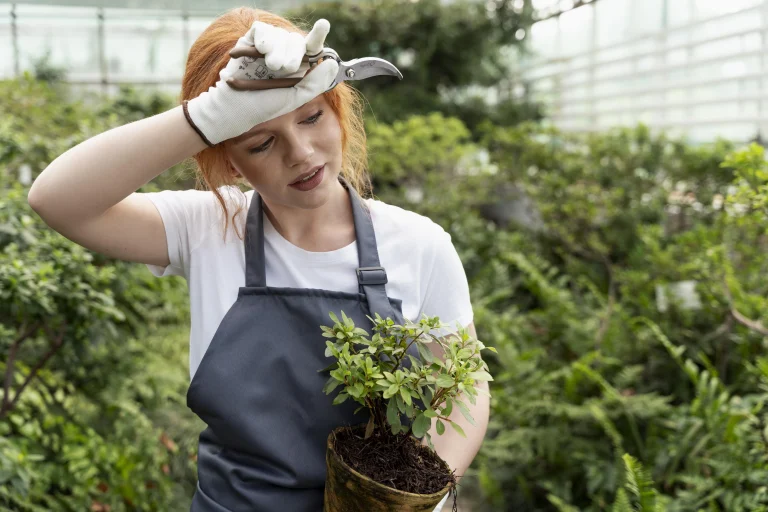Have you ever dreamed of a garden that practically takes care of itself? A space that gives you fresh produce without endless weeding, tilling, or watering? That’s exactly what Back to Eden gardening promises—and delivers. If you’re new to gardening or just tired of fighting with your soil every season, this beginner-friendly method may be your perfect starting point.
Back to Eden gardening works wonders when combined with broader homesteading strategies.
👉 Check out The Self-Sufficient Backyard to learn how to integrate this method with rainwater harvesting, food preservation, and sustainable off-grid living—all from your own property.

What Is Back to Eden Gardening?
Back to Eden gardening is a no-till, regenerative gardening method that emphasizes covering the soil with organic mulch—especially wood chips. It’s based on the idea that natural ecosystems (like forests) don’t till the soil, water daily, or rely on synthetic fertilizers. Yet, they thrive. The goal is to recreate those natural conditions in your garden.
Key Principles:
- No Tilling: Avoids soil disruption and preserves the microbial ecosystem
- Deep Mulching: A thick layer of organic matter mimics a forest floor
- Moisture Retention: Wood chips act like a sponge, holding water in the soil
- Weed Suppression: The mulch blocks sunlight and smothers weeds
- Soil Regeneration: Mulch decomposes over time, enriching the soil naturally
Why Choose Back to Eden Gardening?
You’re probably wondering if this method is worth trying. The short answer? Yes, especially if you want to save time and reduce inputs.
Benefits You’ll Love:
- Less Watering: The mulch holds moisture, which means less irrigation
- Fewer Weeds: A thick mulch layer prevents most weeds from sprouting
- Improved Soil: Each year, your soil becomes more fertile and easier to work
- Low Maintenance: Once set up, your garden almost manages itself
- No Chemicals: Say goodbye to synthetic fertilizers and herbicides
This method works for urban backyard gardens, large rural plots, and even raised beds. If you’re starting from scratch, you’ll love how budget-friendly and accessible it is.
What You’ll Need to Get Started
The great part about Back to Eden gardening is you don’t need fancy tools or expensive supplies.
Basic Tools:
- Shovel or garden fork
- Rake
- Wheelbarrow (optional, but helpful)
Materials:
- Cardboard or newspaper (to block weeds)
- Compost or aged manure (starter nutrients)
- Wood chips (preferably from local arborists or tree trimmers)
- Water source (hose or buckets)
Always use untreated wood chips and avoid dyed or chemically treated mulch. Fresh arborist chips that contain leaves, bark, and branches are ideal.
Step-by-Step Setup for Your Back to Eden Garden
Setting up your Back to Eden garden takes a bit of upfront effort, but the payoff is huge. Here’s how you can get started:

1. Choose a Sunny Spot
Most vegetables need 6–8 hours of sunlight. Pick a location with good exposure and decent drainage.
2. Clear and Smother Existing Weeds
- Remove large weeds, sticks, and debris
- Lay down cardboard or 6+ layers of newspaper across the area
- Overlap edges to avoid gaps where weeds can sneak in
3. Add a Layer of Compost
- Spread 1–2 inches of compost or well-aged manure
- This will provide immediate nutrients for your first crops
4. Add a Layer of Wood Chips
- Spread 4–6 inches of wood chips evenly over the compost
- Keep chips at least 2 inches away from plant stems and trunks
5. Water Deeply
- Saturate the area to help materials settle and begin decomposition
- This step jump-starts microbial activity
6. Let It Settle (Optional but Helpful)
If possible, let your garden rest for a few weeks or even a full season. This gives the mulch time to break down and enrich the soil below.
What to Plant in a Back to Eden Garden
Once your setup is complete, it’s time to plant. You can grow almost anything in a Back to Eden garden, but some crops thrive particularly well.

Top Picks for Beginners:
- Root veggies: Carrots, beets, radishes, potatoes
- Leafy greens: Kale, spinach, lettuce, Swiss chard
- Fruiting crops: Tomatoes, peppers, squash, cucumbers
- Herbs: Basil, thyme, oregano, parsley
How to Plant:
- Don’t plant directly into wood chips! Pull them aside and dig into the compost layer
- Plant seeds or seedlings into the compost/soil
- Gently replace mulch around the base without covering plants
Watering Tips:
- Water as usual in the beginning
- As roots grow deeper, the mulch will retain more moisture and reduce watering needs
Maintaining Your Back to Eden Garden
One of the biggest benefits of this method is its minimal upkeep. That said, there are still a few maintenance tasks you should know about.

Annual To-Do List:
- Add fresh mulch every fall or spring (2–4 inches)
- Keep mulch pulled back from stems and trunks
- Remove weeds that manage to sneak through early
- Watch for signs of nitrogen tie-up (especially in year one)
Addressing Common Issues:
- Nitrogen tie-up: Add more compost or use a nitrogen-rich organic fertilizer early on
- Slugs and pests: Encourage natural predators like birds and frogs
- Fungal growth: Natural and expected; most fungi help decompose mulch
🌱 Recommended Resource: Take Your Garden Further
The Self-Sufficient Backyard
This guide is written by a couple who live entirely off the land—and they show you exactly how to replicate their success. From garden planning and soil care to preserving your harvest, this resource is perfect for anyone embracing the Back to Eden method.
✅ Build a garden that thrives with less effort
✅ Collect and reuse rainwater like a pro
✅ Preserve your food without relying on electricity
👉 Get The Self-Sufficient Backyard here and start transforming your garden into a thriving ecosystem.
Back to Eden Gardening Success Tips
Want to make the most of your setup? Keep these simple rules in mind:
- Source free wood chips from tree services (ask for arborist chips)
- Start small—expand as you gain confidence
- Keep records of what you plant and how it performs
- Trust the process—it gets better each year
- Invite biodiversity by planting flowers and companion crops
Frequently Asked Questions About Back to Eden Gardening
Is Back to Eden gardening good for beginners?
Yes! It’s especially helpful for beginners who want to avoid frequent weeding and watering. Once established, this method is extremely forgiving.
Where do I get wood chips for free?
Contact local tree services or look for arborist chip programs like ChipDrop. Ask for chips that include leaves, bark, and twigs for best results.
Can I use Back to Eden gardening in raised beds?
Absolutely. Just follow the same layering method—cardboard (optional), compost, and wood chips. Make sure you have good drainage.
How soon can I plant after setting it up?
You can plant immediately by pulling back the mulch and using the compost layer. For best results, give it a few weeks to settle.
What if my soil is poor or clay-heavy?
The mulch and compost will gradually improve soil structure. Add more organic matter as needed, and avoid tilling, which compacts clay further.
Final Thoughts: Start Your Back to Eden Journey Today
Back to Eden gardening isn’t just a method—it’s a mindset. It invites you to slow down, observe nature, and work with the rhythms of the earth. You don’t need special skills or a huge budget to get started. All you need is patience, the willingness to learn, and a few basic materials.
If you’re tired of back-breaking work in the garden and want something that rewards you season after season, this approach might be your next great adventure.
Ready to build a self-sustaining garden that works with nature, not against it? Whether you’re starting small or going all in, The Self-Sufficient Backyard is your next step toward a more abundant, resilient lifestyle.

